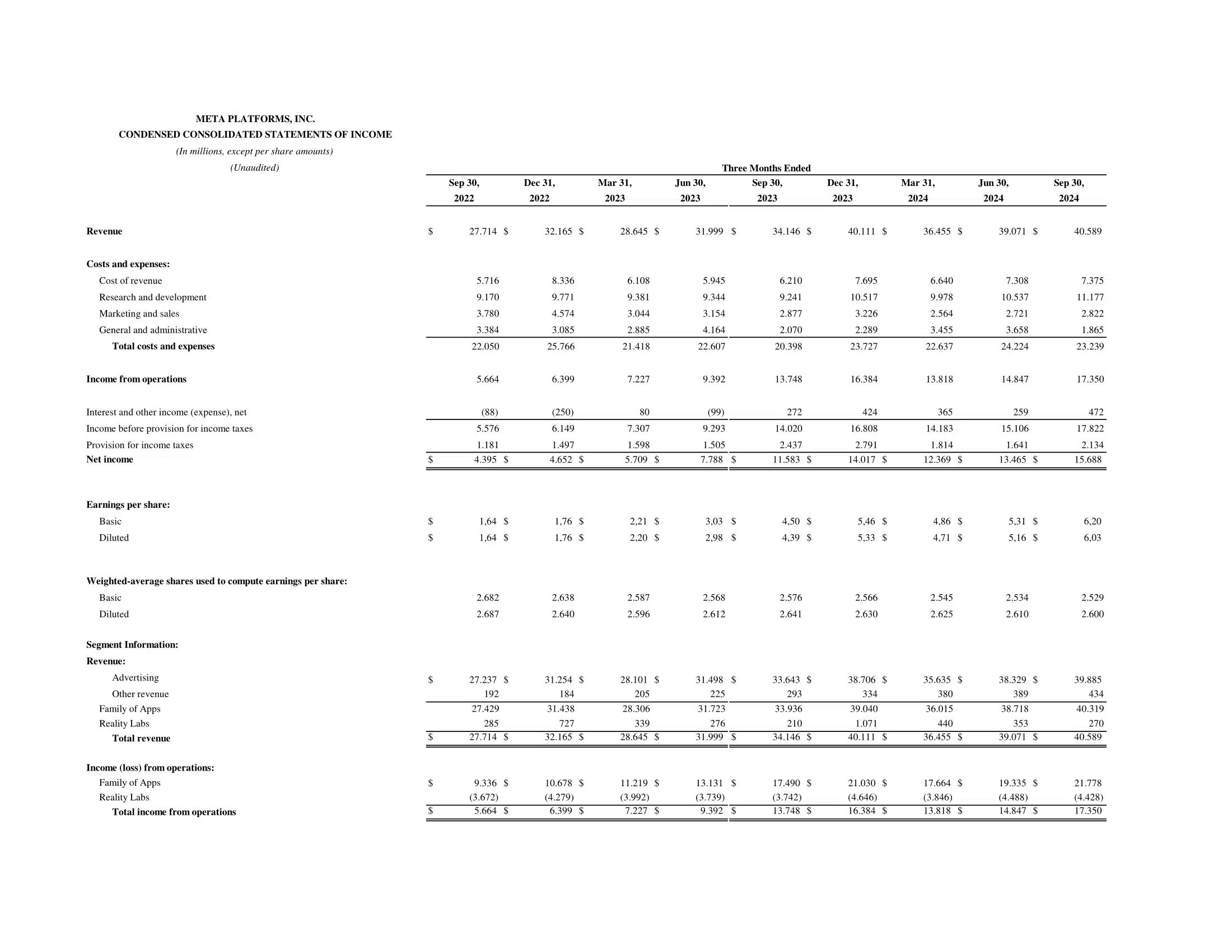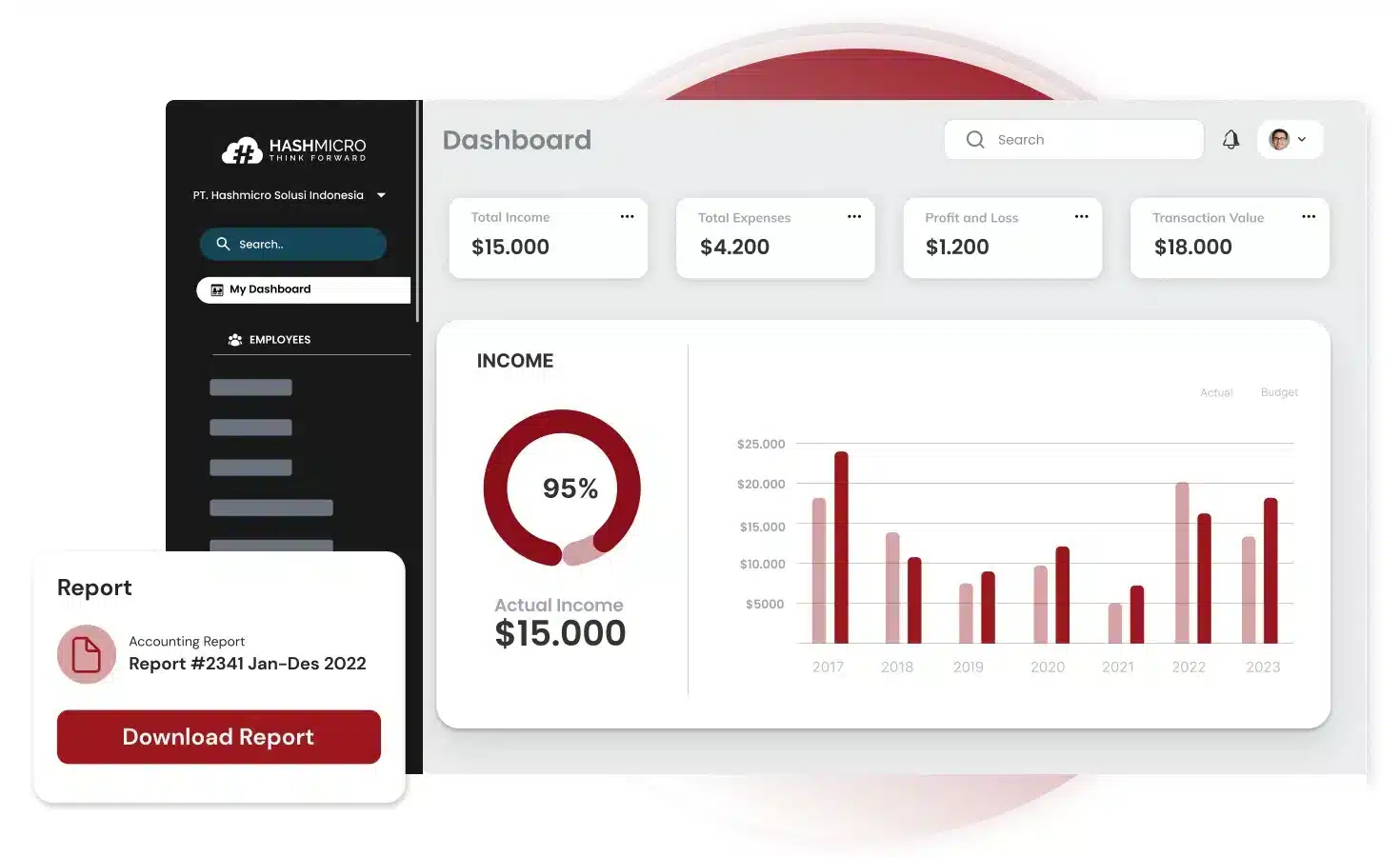Managing an income statement manually might get the job done…. until data starts to overflow, and you’re spending more time fixing formulas than analyzing results. For many businesses, this can turn a simple task into a daily struggle, especially as transactions grow.
Imagine if you had a tool that could handle all the data consolidation, calculations, and compliance in just a few clicks. An ideal solution would seamlessly pull financial data from various sources and automatically format reports to meet tax standards. Kapanapanabik, hindi ba?
This article will provide a comprehensive overview of income statements, including how to analyze, formula, a free template download, and a better alternative to doing your income statement manually. Simulan na natin!
Key Takeaways
|
Table of Contents
What is an Income Statement?
An income statement overviews a company’s revenues, expenses, and overall profitability for a specified period. Also referred to as a profit-and-loss (P&L) statement or earnings report, it highlights:
- revenue generated from selling goods or services,
- expenses incurred in earning that revenue and managing operations,
- net income (or profit) left after covering expenses.
Along with other key financial documents, like the balance sheet, cash flow statement, and statement of retained earnings, the income statement forms a core part of a company’s financial data and reporting.
Income statements can be prepared for various timeframes. An annual income statement shows performance over the latest fiscal year, while interim statements may reflect monthly, quarterly, or semi-annual data.
Typically, income statements include results for the current period alongside a prior period to support comparison. For instance, an income statement for the period April 1 to March 31, 2022, would display data from both that year and the previous one, April 1 to March 31, 2021.
What are the Main Parts of an Income Statement?

Income statements are one of the types of accounting that are essential to a business’ performance. The format of an income statement may differ based on local regulations, the business’s complexity, and its operational activities. Nevertheless, certain essential information remains consistent.
1. Operating Revenue
Revenue generated from core business activities is commonly known as operating revenue. For companies focused on manufacturing, wholesaling, distributing, or retailing a product, operating revenue refers to income from product sales. Similarly, businesses offering services earn operating revenue from fees associated with those services.
2. Non-Operating Revenue
Income from non-primary activities, often recurring, is called non-operating revenue. This includes income not directly tied to selling goods or services, such as:
- Interest earned on business funds in bank accounts
- Income from leasing business property
- Royalties from strategic partnerships
- Advertising revenue from placements on business property
3. Gains
Also referred to as sundry income, gains represent net earnings from non-recurring activities, like selling long-term assets. This may include net profit from selling an old company vehicle, unused property, or a subsidiary.
It’s essential to distinguish revenue from receipts. Revenue is recorded when sales are made or services rendered, while receipts represent cash received, recorded when payment is actually collected.
For instance, if a customer receives goods on September 28, this would be recorded as revenue in September. If the customer pays within a 30-day term, the receipt is recorded in October.
4. Primary-Activity Expenses
The cost and expense are directly related to generating the business’s primary revenue. The manufacturing financial statements, for example, include cost of goods sold (COGS), selling, general, and administrative (SG&A) expenses, depreciation or amortization, and research and development (R&D) expenses.
Common items in the expenses include:
- Employee wages
- Sales commissions
- Utilities
- Transportation costs
5. Secondary-Activity Expenses
These are expenses from non-core business activities, like interest on loans. They may be ongoing or one-time costs.
6. Losses as Expenses
These expenses relate to losses from the sale of long-term assets, unusual one-off costs, or legal expenses from lawsuits.
How Do You Analyze Income Statements?
There are multiple ways to analyze an income statement:
- Bottom Line
Examine net income to determine if the company is profitable and assess changes in profit over time. To gain further insight, calculate and compare the net profit margin, analyzing factors that may have influenced shifts in both net income and profit margin. - Vertical Analysis
Calculate each line item as a percentage of total revenue, starting with the cost of goods sold (COGS) and moving downward. This approach highlights how each expense impacts profitability, so that businesses could find a way to impprove on the not-so-performing aspects. - Time Series Analysis
Compare each line item across multiple years in both dollar amounts and as percentages of revenue. This analysis helps explain shifts in profitability and provides insights for enhancing future performance. - Notes to the Financial Statements
Carefully review the notes accompanying the financial statements. This section, often prepared by accountants, reveals assumptions and essential details that help interpret and thoroughly understand the income statement figures.
Overall, the whole process can be made easier with the right tools. While using spreadsheets seems to be the simpler alternative, your calculations might not be accurate anymore, as more data equals more risks of errors. Hay naku!
If you’ve already felt the frustration of managing your data with spreadsheets, why not consider using an automated system? The best accounting system can centralize your data, which leads to smoother and more accurate income statements. Try the free demo by clicking the banner below!

What are the Uses of Income Statement?

Income statements serve multiple purposes. Externally, they are mainly utilized by investors and creditors, while internally, they provide valuable insights for executives and management teams.
1. Investors
The core function of an income statement is to share detailed information about a company’s profitability and activities with stakeholders. It offers an in-depth look into the company’s operations, which can be useful for cross-company and sector comparisons.
2. Management
The primary revenues and expenses reveal how well the core business is performing, while secondary revenues and fees indicate the company’s success in managing additional, non-core activities.
For instance, if income from interest on cash reserves significantly outweighs income from sales, it may suggest that the company is underutilizing available funds or struggling to expand market share in a competitive environment.
In contrast, regular secondary income, such as rental earnings from billboards on company-owned property, reflects management’s effective use of resources to boost profitability.
Using these insights, management can decide whether to:
- Enter new markets
- Boost sales efforts
- Explore a new industry
- Increase production capacity
- Optimize asset use
- Buy or sell major assets
- Discontinue a department or product line
2. Creditors
Creditors prioritize future cash flows over past profits. However, analysts may use income statements to assess year-over-year and quarter-over-quarter performance.
The information helps determine, for example, if efforts to reduce the cost of sales have improved profitability. Also, it can indicate if management has effectively controlled operating expenses without sacrificing profits.
Income Statement Structure

Here’s how to calculate net income with a fictional example of a specialty electronics store in the Philippines, which also provides repair services.
In a recent quarter, this electronics store earned PHP 40,000 from sales of electronic devices and PHP 8,000 from repair services, totaling PHP 48,000 in revenue. However, generating that income came with expenses. The store spent PHP 16,000 on procurement costs, rent, and employee wages.
Additionally, the business made PHP 3,000 in net gains from selling an old company motorbike but had a PHP 1,200 loss related to a customer dispute settlement.
Using these figures, we can calculate net income as follows:
Net Income = (Revenue + Gains) – (Expenses + Losses)
= (PHP 48,000 + PHP 3,000) – (PHP 16,000 + PHP 1,200)
= PHP 51,000 – PHP 17,200
= PHP 33,800
Thus, after accounting for all revenue, gains, expenses, and losses, the electronics store’s net income for the quarter is PHP 33,800.
Single-step vs. multiple-step income statement
A single-step income statement, like the example above, is the simplest type of income statement a business can create. A single-step format involves a straightforward calculation where total revenue and gains are added together, and expenses and losses are subtracted.
However, large corporations often have complex global operations, with multiple business divisions offering diverse products and services. They may also engage in mergers, acquisitions, and strategic alliances.
This diversity and the need to comply with regulatory standards make income statements more detailed and complex.
A multi-step income statement, typically used by large corporations, reports profitability at four key levels: gross, operating, pretax, and after-tax. This layered approach helps pinpoint how income and profitability evolve at each stage of operations.
For example, a high gross profit paired with lower operating income may suggest high operating expenses, while a high pretax profit but lower after-tax profit could indicate significant tax expenses or one-time, unusual charges.
Also read: A Guide to Electronic Invoice System BIR Philippines in 2024
Examples of Income Statement
Below is an example of Meta’s consolidated statement of operations, or income statement, for the years from 2022 to 2024. Take a look at the income statement and a breakdown of it below.

This Meta’s income statement provides a financial overview of Meta’s performance over several quarters. Here’s a breakdown of what the key sections mean:
- Revenue
Revenue represents the money Meta earned from its main business activities. The majority of Meta’s revenue comes from advertising, with a smaller portion from other sources, like Reality Labs (focused on AR/VR). Revenue has generally increased each quarter, indicating growth in earnings, especially in 2024. - Costs and Expenses
These are the costs associated with generating revenue, which include:- Cost of Revenue: Direct costs tied to delivering Meta’s products and services.
- Research and Development (R&D): Investments in new technologies, platforms, and product features.
- Marketing and Sales: Expenses for advertising Meta’s products and building customer awareness.
- General and Administrative: Costs related to the overall management of the business, such as administrative salaries and office expenses.
- By comparing costs to revenue, we can see how efficient Meta is in controlling expenses. Notably, R&D expenses are significant, which reflects Meta’s ongoing investments in new technology like the metaverse.
- Income from Operations
This figure (also called operating income) is calculated by subtracting total costs and expenses from revenue. It shows Meta’s profit solely from its business operations, excluding other income or expenses. - Interest and Other Income (Expense) Net
This line shows income or expense from non-operating activities, such as interest income from investments or expenses from debt. Positive values indicate net income from these sources, while negative values indicate net expenses. - Income Before Provision for Income Taxes
This represents the total income before taxes are deducted. It combines operating income and other income/expenses, providing a comprehensive view of Meta’s profitability before taxes. - Provision for Income Taxes
This is the estimated tax expense based on income before taxes. Meta’s tax expense fluctuates with changes in profitability and tax planning strategies. - Net Income
Net income, or profit, is the remaining amount after all expenses and taxes. Meta’s net income has been increasing significantly, indicating strong financial performance, especially throughout 2024. - Earnings Per Share (EPS)
EPS measures profitability per share of stock. Meta provides both basic EPS (based on shares currently outstanding) and diluted EPS (accounting for potential shares from stock options). Both basic and diluted EPS have risen, indicating better returns for shareholders. - Segment Information
- Revenue: Meta breaks down revenue by segments:
- Advertising: The main revenue source from ad sales on platforms like Facebook and Instagram.
- Other Revenue: Includes income from non-advertising sources, such as Reality Labs.
- Income (Loss) from Operations: Meta separates profits by segment:
- Family of Apps (Facebook, Instagram, Messenger, WhatsApp): This segment consistently generates high income, supporting overall profitability.
- Reality Labs: Focused on VR/AR, this segment has been running at a loss, reflecting Meta’s heavy investments in the metaverse despite not yet yielding profit.
- Revenue: Meta breaks down revenue by segments:
In summary, Meta is showing strong growth in revenue and profitability, particularly through its advertising business. While Reality Labs continues to incur losses due to high R&D investments, the Family of Apps segment bolsters Meta’s overall financial health.
Income Statement Templates
You can download monthly, quarterly, and annual free income statement templates to fill in with your own data below. In addition, you can look at the samples we’ve provided to give you an idea of how to fill it.
Income Statement Template
With this template, you can get an understanding of how to make your own income statement and use it as needed.
Generate Income Statements in Just Several Clicks Using Accounting Software

Creating an income statement using Excel might seem straightforward, but what happens when the data starts to pile up? As transactions increase and you’re dealing with multiple entries, building formulas from scratch can quickly become time-consuming and prone to mistakes.
HashMicro Accounting Software offers a practical solution for managing large volumes of financial data. It consolidates information from various sources into a single platform. As a result, it’s way easier to calculate income statements and other financial reports accurately.
For businesses in the Philippines, it’s even easier! HashMicro’s software is BIR CAS-ready, meaning you don’t have to worry about converting or adjusting reports. Your income statements and other financial documents are compliant right from the start.
Below is the list of its features:
- Complete Financial Statement (GL, TB, P&L, BS) with Period Comparison: Access comprehensive financial statements, including general ledger, trial balance, profit & loss, and balance sheet, with easy period-to-period comparisons.
- Multi-level analytical (Compare FS per project, branch, etc.): Analyze financial statements across different levels, such as projects or branches, to gain detailed insights into performance variations.
- BIR CAS Integration: Automatically format reports to comply with BIR CAS standards, saving time and ensuring tax compliance without manual adjustments.
- Chart of Accounts Hierarchy: Organize accounts in a clear hierarchy, allowing accurate categorization and simplified tracking of income and expenses.
- Automated Currency Update: Keep financial records accurate with real-time currency updates, which is ideal for businesses dealing with multiple currencies.
- Multi-Company with Inter-Company Transaction and Consolidation Reports: Consolidate income statements and track inter-company transactions effortlessly for businesses with multiple entities.
- In-Depth Accounting Reports: Access advanced accounting reports, including financial ratios and partner aging, to support detailed financial analysis and planning.
Conclusion
An income statement shows a company’s revenue, expenses, and net income over a specific period. It highlights how well a business generates profit by comparing revenue against expenses. Preparing this statement regularly offers clear insights into a company’s financial health.
Managing income statements with spreadsheets can be tedious and error-prone, especially with large datasets. HashMicro Accounting Software eases this process, consolidating data automatically to generate accurate, BIR-CAS audit-ready reports.
Why handle calculations manually when an automated system can boost accuracy and save precious time? Discover the difference that accounting software makes—prepare, analyze, and format income statements effortlessly. Kahit gaano karami ang transactions, mas madali na ngayon ang pag-manage ng financial reports!
Try the free demo today to experience smoother, more reliable financial reporting!
FAQ About Income Statement
-
What is the difference between an income statement and a balance sheet?
An income statement details a company’s revenues and expenses over a specific period, showing profitability. In contrast, a balance sheet provides a snapshot of a company’s assets, liabilities, and shareholders’ equity at a particular point in time, reflecting financial position.
-
How does an income statement differ from a cash flow statement?
An income statement records revenues and expenses when they are earned or incurred, regardless of cash movement, following the accrual accounting method. A cash flow statement, however, tracks actual cash inflows and outflows, highlighting the company’s liquidity and cash management.
-
How can an income statement be used to assess a company’s financial health?
By analyzing trends in revenues, expenses, and net income over multiple periods, stakeholders can evaluate operational efficiency, profitability, and potential areas for cost reduction or revenue enhancement.
-
What are common mistakes to avoid when preparing an income statement?
Common errors include misclassifying expenses, neglecting to record all revenue streams, and failing to adjust for accruals and deferrals. Ensuring accurate categorization and timely recording of all financial transactions is crucial for a reliable income statement.
{
“@context”: “https://schema.org”,
“@type”: “FAQPage”,
“mainEntity”: [{
“@type”: “Question”,
“name”: “What is the difference between an income statement and a balance sheet?”,
“acceptedAnswer”: {
“@type”: “Answer”,
“text”: “An income statement details a company’s revenues and expenses over a specific period, showing profitability. In contrast, a balance sheet provides a snapshot of a company’s assets, liabilities, and shareholders’ equity at a particular point in time, reflecting financial position.”
}
},{
“@type”: “Question”,
“name”: “How does an income statement differ from a cash flow statement?”,
“acceptedAnswer”: {
“@type”: “Answer”,
“text”: “An income statement records revenues and expenses when they are earned or incurred, regardless of cash movement, following the accrual accounting method. A cash flow statement, however, tracks actual cash inflows and outflows, highlighting the company’s liquidity and cash management.”
}
},{
“@type”: “Question”,
“name”: “How can an income statement be used to assess a company’s financial health?”,
“acceptedAnswer”: {
“@type”: “Answer”,
“text”: “By analyzing trends in revenues, expenses, and net income over multiple periods, stakeholders can evaluate operational efficiency, profitability, and potential areas for cost reduction or revenue enhancement.”
}
},{
“@type”: “Question”,
“name”: “What are common mistakes to avoid when preparing an income statement?”,
“acceptedAnswer”: {
“@type”: “Answer”,
“text”: “Common errors include misclassifying expenses, neglecting to record all revenue streams, and failing to adjust for accruals and deferrals. Ensuring accurate categorization and timely recording of all financial transactions is crucial for a reliable income statement.”
}
}]
}






































































